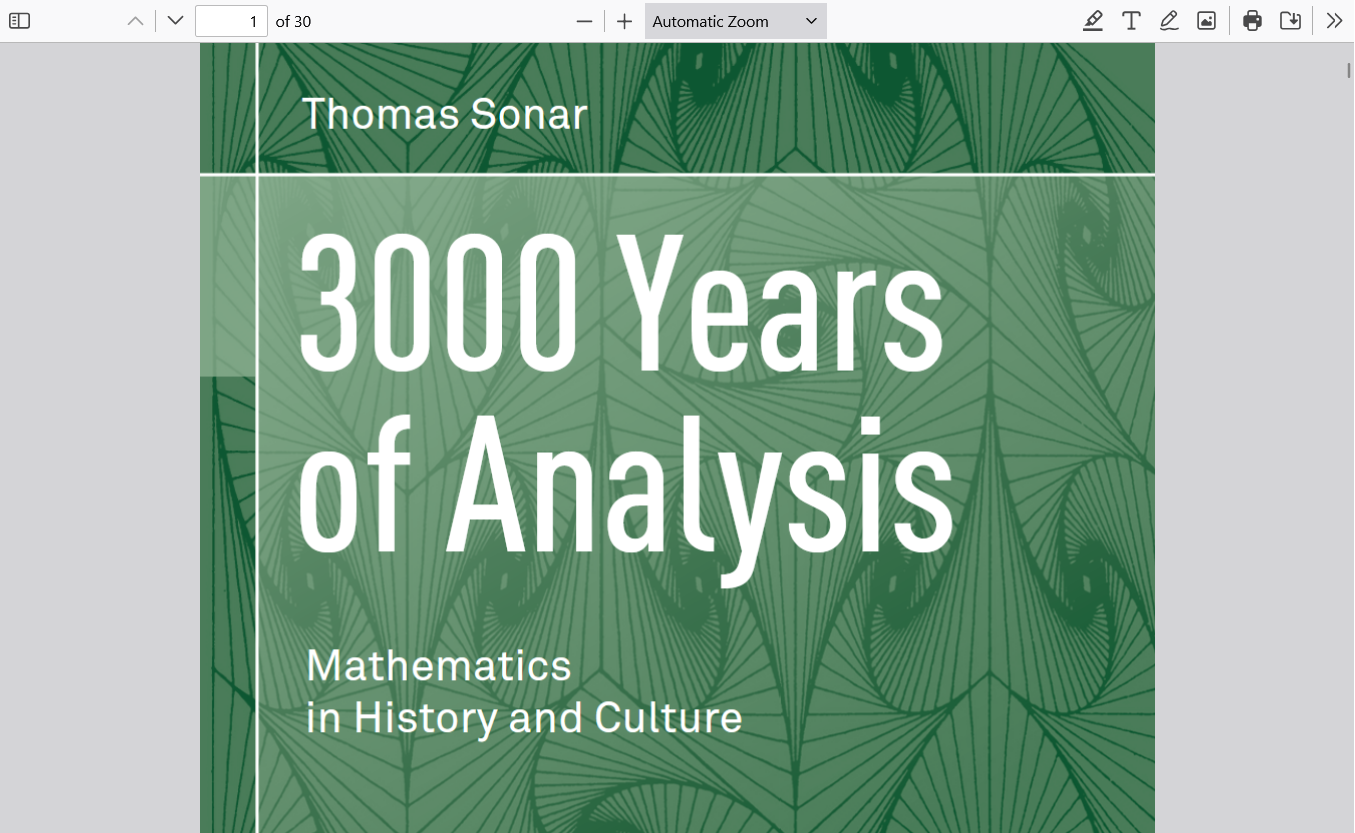https://content.e-bookshelf.de/media/reading/L-14254646-bcf8c8ce6e.pdf
and the review I read is here:
https://www.ams.org/notices/202301/rnoti-p115.pdf
It starts like this:
Contents
1 Prologue: 3000 Years of Analysis
1.1 What is ‘Analysis’ ?
1.2 Precursors of π
1.3 The π of the Bible
1.4 Volume of a Frustum of a Pyramid
1.5 Babylonian Approximation of √2
2 The Continuum in Greek-Hellenistic Antiquity
2.1 The Greeks Shape Mathematics
2.1.1 The Very Beginning: Thales of Miletus and his Pupils
2.1.2 The Pythagoreans
2.1.3 The Proportion Theory of Eudoxus in Euclid’s Elements
2.1.4 The Method of Exhaustion – Integration in the Greek Fashion
2.1.5 The Problem of Horn Angles
2.1.6 The Three Classical Problems of Antiquity
2.2 Continuum versus Atoms – Infinitesimals versus Indivisibles
2.2.1 The Eleatics
2.2.2 Atomism and the Theory of the Continuum
2.2.3 Indivisibles and Infinitesimals
2.2.4 The Paradoxes of Zeno .
2.3 Archimedes
2.3.1 Life, Death, and Anecdotes
2.3.2 The Fate of Archimedes’s Writings
2.3.3 The Method: Access with Regard to Mechanical Theorems
2.3.4 The Quadrature of the Parabola by means of Exhaustion
2.3.5 On Spirals
2.3.6 Archimedes traps π
2.4 The Contribution of the Romans
3 How Knowledge Migrates – From Orient to Occident
3.1 The Decline of Mathematics and the Rescue by the Arabs
3.2 The Contributions of the Arabs Concerning Analysis
3.2.1 Avicenna (Ibn S¯ın¯a): Polymath in the Orient
3.2.2 Alhazen (Ibn al-Haytham): Physicist and Mathematician
3.2.3 Averroes (Ibn Rushd): Islamic Aristotelian
